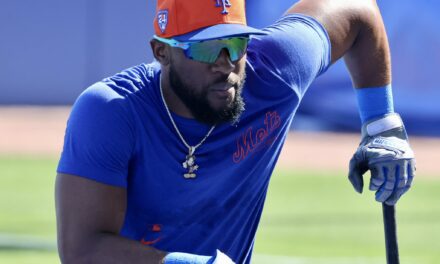I found this to be pretty interesting.
This is an interview done by Brian Walton, and was done back in 2004 when John Mozeliak was the Asst. GM for the St. Louis Cardinals. It’s an interesting read, that’s all I’m saying. Especially when you consider this man went to sleep last night a World Series winning GM.
Here are some excerpts, what are your thoughts?
The strategy this year was obviously to go heavy on college players versus high school. What were the factors that caused you to come to that conclusion?
There’s a couple of things. One was “How do you validate a subjective scouting report?” And, the one thing we were able to do is come up with metrics we could use to help us justify why we were taking players and where we were taking them. The one thing I wanted the scouts to concentrate on was not so much just on what they thought about where a player should go and that sort of thing in terms of the draft. I wanted them to tell me, “What are the tools this player brings?”, and I would validate it with a multitude of other things to look at. One would be our statistical analysis. One would be through our psychological testing. One would be our medical risk/reward factors. So, we would put all of this into an equation and then help us try to put this into some kind of ranking system. But, we’d also want to phrase the question to the area scout as “Where do you value this player? What level of dollars do you actually want to commit to someone like this?” So, with all of that, we put it into the hopper and then we would just filter it all out. It’s really too early to say if it was successful or not. But, overall, we’re very pleased with what we ended up with in the draft. That’s for sure.
Over the winter, the Cardinals decided to go with a new scouting computer system. How is that progressing?
Well, it’s a huge help for what I do. In the past, we’ve had different systems that we used and different interfaces that we used to gather the information. Now, we’ve gone with a company called eSolutions, which is used by probably nine or ten major league clubs. What it really enables us to do is that it is a perfect gathering tool. It allows scouts without any major computer issues to go ahead and write a report and turn it into the home office. As far as the power of sorting the data and that kind of thing, it is a Notes-based system. That is probably one of the weaknesses of it. But, they do build views for us and we’re starting to learn how to do it ourselves internally. That will make it an even more powerful tool for us.
Again, as technology advances, so does the sport in every facet.
Speaking of tools, last winter’s high profile addition to the front office was the hiring of Jeff Luhnow and the establishment of the sabermetric view of the game. How is that meshing with your more traditional methods of evaluation?
I think it is going very well. Obviously, for what I did this year in the draft, I leaned heavily on Jeff and his staff. That’s the nature of how we set this whole thing up. In terms of the draft, I realize that when you go totally off scouting reports, then you’ve opened yourself up to such a subjective scenario of results. The one thing that I wanted to do is validate what we do. That’s where his staff was just invaluable. I think it’s a great direction we’re moving in. I think as far as the draft goes, I think it is something that we will replicate for next year. I think both Jeff and I feel there are some things we can tweak on to make it that much better. And that is actually kind of why I am here now.
What do you mean?
I’ve always in the past gone to our rookie clubs and taken a look at our players, but I’m really looking at it this year in terms of “Well, what did our scouts truly see versus what did I see?” And, clearly you have to take into account the fatigue factor in the first year of professional baseball and the higher competition and all that. But, for this system to work that we’ve put in place, one thing that we’re going to have to make sure that we’ve accomplished is to ensure that all the scouts are completely on one page. And that they understand how we view tools in baseball. I mean traditional tools; arm strength, running speed, power, bat and all that. We have to all be in agreement on what that means. So, I’ll spend most of my summer validating that and then hopefully in this off-season, be able to spend three or four days with our scouts and try to let them know what I found on that.
To me, the most important part of this whole thing here is the fact he seems to stress that he wants everybody is on the same page. They have an organizational concept, and they want to stick to it in everything they do.
You know, this interview took place 7 years ago and because the organization trusted his outlook on their future, he is now the GM and the Cardinals are World Series Champions. Every team has a different way of doing things, but when everybody within the organization are on the same page, and the executives making decisions are using EVERY piece of data they can find, the odds of success are greater than just ignoring valuable information.
To read the entire interview, please go to https://www.thestlcardinals.com/INVMozeliakJohn.html














